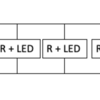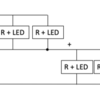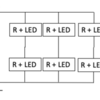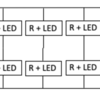Circling back to my question about using Rod's device (nee GRJ + AC to DC) for powering LED retrofits for my passenger cars, along with Pete's idea about wiring up the LED strips in parallel, I think there's a way to avoid having to use a buck-boost circuit for variable AC, to wit:
Scrapping the rust off my ability to use Kirchoff's law (this could be embarrassing) - here's my analysis, using some quick sketches in Powerpoint (I don't have anything handy to use actual symbols). Here's what the 2" long portion of the LED strip light looks like, a parallel circuit with identical resistors (R) to control the current for the LEDs. The current in just one R + LED leg is I = V/R. With three legs, Rtotal is R/3 (1/Rtotal = 3/R), so the current in the circuit is now 3V/R = 3 x just one leg (I know, elementary...). :
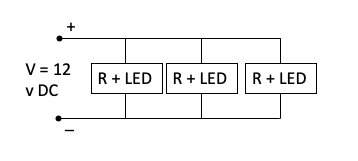
So using Pete's idea, here what two of these strips look like in parallel:
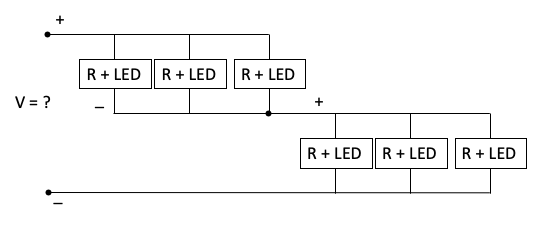
Since all of the R + LED units are the same (or close enough), I claim that the equivalent circuit is:
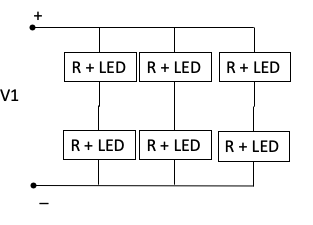
so (here's where the rust may show) for each leg, Rleg = 2R and 1/Rtotal = 3/Rleg = 3/(2R) and Rtotal = 2R/3. Since Rod's device is constant current, V1 = IRtotal = I x 2R/3 = 2/3 x V (original). So in the original circuit, V was 12 v, so V1 is now 8 v.
Assuming I've done this right, if each of the LED strips is now 4 inches long (total of 8, which is a little bit shorter than the length of a Flyer passenger car), its:
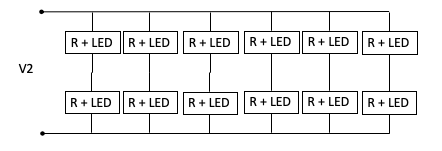
Using the same analysis as above, I get V2 = 1/3 x V (original) or 4 volts. Since most of the Flyer AC transformers start around 4 to 5 volts, I should be able to use Rod's constant current/ buck circuit, right??
thanks for any advice ...
- Rich
![]()
















